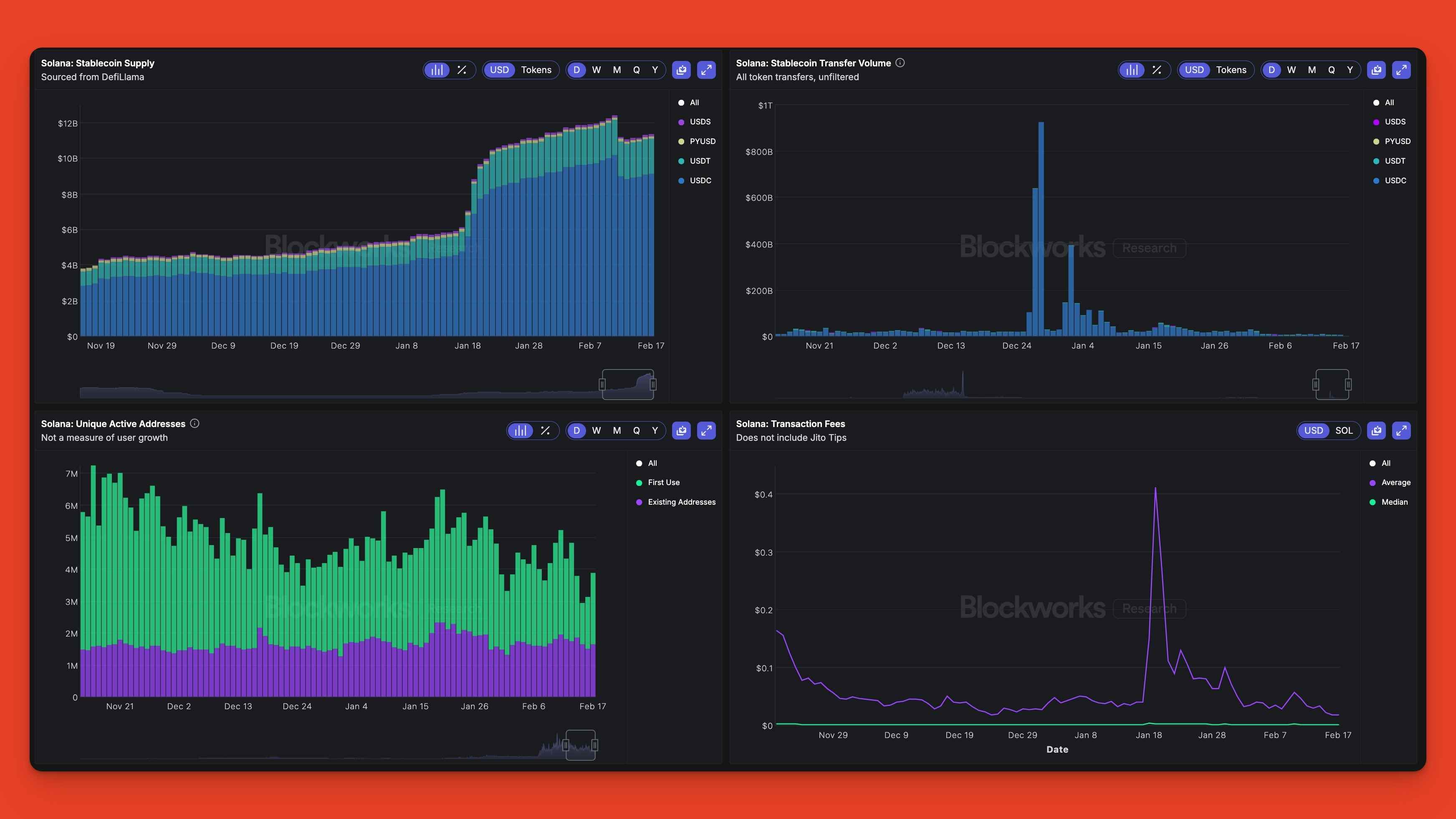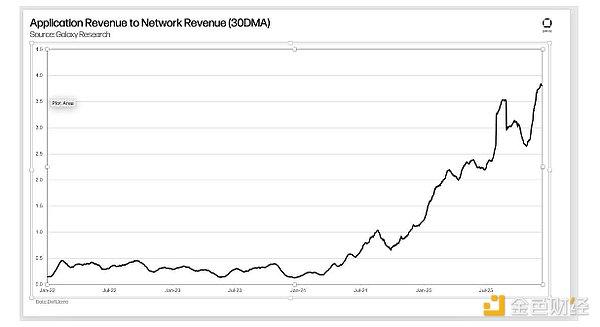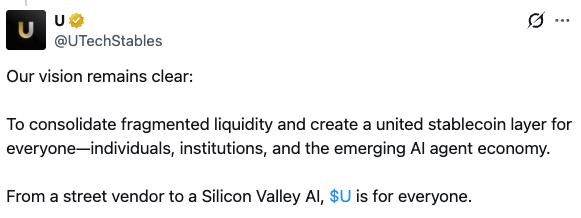Author: Jack Stewart
Compiled by: TechFlow

Introduction
Solana has become one of the most prominent blockchain ecosystems due to its high-speed and low-cost architecture. However, the high speed also brings complexity - users new to Solana data may feel overwhelmed. Compared to traditional blockchains, Solana's parallel processing mechanism and account-based model pose unique challenges in data querying, indexing, and analysis.
Whether you are a developer building applications, an analyst researching trends, or an enthusiast interested in transaction flows, choosing the right tools is key.
This guide will help you fully understand how to work with Solana data. We'll cover best practices from accessing raw RPC endpoints to leveraging powerful indexing services, and step-by-step how to efficiently access and analyze Solana blockchain data.
After reading this, you'll have a clear understanding of how to find the data you need, how to process it efficiently, and the best tools to use for each scenario.
Let's dive in!
Solana's RPC Services
Remote Procedure Call (RPC) services are the bridge for developers and applications to interact with Solana. They provide the functionality to access the blockchain state, submit transactions, and retrieve historical data.
Core Use Cases
Common scenarios for obtaining data through RPC providers include:
DeFi applications - querying token holders, getting account balances, etc.
Non-Fungible Token (NFT) applications - tracking minting records, querying metadata, and ownership changes
Data applications - aggregating data to generate application metrics and dashboards
RPC Providers
There are many different RPC providers to choose from in the market. While their core functionalities are similar, key factors to consider when selecting one include: response latency, operational stability, data accuracy, rate limiting, service cost, native Solana expertise, and technical support capabilities.
Some common providers include:
Helius
Triton
QuickNode
Alchemy
Ankr
ChainStack
For scenarios requiring real-time responsiveness (such as live account or program monitoring), tools like Webhooks, WebSockets, or gRPC may be more suitable as they are better equipped to handle latency-sensitive tasks.
Real-Time Data Streaming Tools
In scenarios requiring real-time data access, Geyser streams and Webhook-based services can continuously push the latest updates on Solana blockchain activity without relying on traditional RPC polling. These solutions are particularly important for trading bots, data analytics platforms, and real-time monitoring applications, as they have a high demand for low-latency data.
Geyser streams enable external services to receive real-time updates on transactions, account changes, and program interactions by directly subscribing to Solana validators. This approach is more efficient than frequently querying RPCs, as it reduces redundant requests and can instantly capture new on-chain events.
Geyser Streams
The Solana-provided Geyser plugin allows validators to directly stream real-time data to external services. This makes it a powerful tool for indexing on-chain data, custom data aggregation, and on-chain analytics. However, using the Geyser gRPC streaming functionality requires you to run your own validator node or rely on a dedicated node service.
Webhooks, WebSockets, and Real-Time APIs
Webhooks provide an alternative to RPC or gRPC nodes, allowing developers to track specific blockchain activities by receiving push notifications of events.
Developers can subscribe to specific events (e.g., wallet transactions, token transfers, or on-chain program interactions) and receive updates in real-time without the need for frequent RPC polling. This approach not only reduces infrastructure overhead but also significantly improves efficiency.
Similarly, WebSocket connections support real-time streaming of blockchain data, enabling applications to stay in sync with the latest on-chain data without repeatedly sending requests.
For applications requiring real-time data, Geyser, WebSockets, and Webhooks provide the lowest-latency data access methods, effectively reducing infrastructure costs and improving response times.
However, it's important to note that real-time data streaming tools and RPC nodes are not well-suited for large-scale historical data analysis. For historical data processing, SQL-based solutions like Flipside and Dune are more efficient and convenient.
Solana Historical Data Tools
Flipside and Dune are two SQL-based on-chain data analysis tools that help users query and analyze Solana's historical blockchain activities without directly dealing with complex RPC calls.
These platforms index and structure Solana data, making it more suitable for data analysis scenarios. However, as their data sets have some latency (Flipside typically has a 15-minute delay, while Dune's latency can range from 1 minute to 60 minutes depending on the specific data set), they are more suitable for historical data analysis rather than real-time data retrieval.
Dune
Dune is a platform that allows users to analyze Solana data through SQL queries, providing highly flexible data modeling capabilities. Users can create custom tables and dashboards to track blockchain activities and key metrics.
The platform operates on a pay-per-use model, with the query costs increasing as usage grows.

Solana key metrics dashboard on Dune, provided by 21co
Flipside Crypto
Flipside is another SQL-based on-chain data analysis platform that provides pre-indexed Solana data sets. These data sets cover transaction records, token transfers, DeFi protocols, and NFT activities, structuring the data to simplify the querying process for users.
Flipside offers a free-to-use basic version with high query limits, making it suitable for a variety of analysis needs.
SQL-based historical data analysis tools are well-suited for intermediate to advanced data analysts, especially when dealing with large-scale data sets, as they significantly simplify the querying process for complex data. However, if you need to access archived data or custom data sets, tools like Google BigTable and custom indexers may be more appropriate.
Archived Data and Custom Indexing Tools
For in-depth blockchain analysis, custom indexing solutions can be a more efficient choice than directly calling RPC nodes.
Due to the massive volume of Solana's transaction history data, directly extracting historical data from RPC nodes often faces issues with slow speed, high cost, and low efficiency.
Indexing solutions, by storing and structuring blockchain data, enable users to query more quickly and flexibly. For example, when developers need to analyze a large volume of transaction data over a period of time, these tools can significantly improve query efficiency and reduce infrastructure costs.
Custom Indexers
Custom indexers are tools that allow developers to define their own data indexing logic based on specific needs. This can help users more efficiently analyze long-term trends, DeFi activities, and token flows, without the need to frequently extract raw log data from the blockchain.
Unlike pre-built analysis tools like Flipside and Dune, custom indexers give developers full control over data storage and access, allowing them to flexibly adjust the data structure and query logic according to their requirements.
Google BigQuery
Google BigQuery is a cloud platform that supports SQL queries, allowing users to access Solana's blockchain historical data. The platform enables large-scale data analysis without the need for users to run their own indexers.
Unlike the pre-structured data sets provided by Flipside and Dune, BigQuery allows users to freely define their own data models. This flexibility makes it particularly suitable for scenarios requiring custom analysis and business intelligence, such as enterprise-level data analysis or complex on-chain activity research.
Decentralized Data Storage
For scenarios that require long-term storage of blockchain data, decentralized storage tools offer reliable archiving solutions. For example, Filecoin's Old Faithful project, Arweave, and Shadow Drive can permanently store raw blockchain data without relying on traditional centralized databases.
These tools are suitable for developers, research institutions, or data analysts who need to preserve on-chain data in the long term. For regular users who do not require data archiving or large-scale historical data sets, block explorers provide a simpler and more intuitive way to understand on-chain activities.
Block Explorers
Block explorers are tools used to view, analyze, and verify on-chain data. They present transaction records, account balances, token flows, and on-chain program interactions in a structured format, serving as important tools for traders, developers, and analysts to track blockchain activities.
Users can search by transaction ID, wallet address, token, or contract, and view detailed information such as the execution path of transactions, fees, and account changes.
While all block explorers share similar core functionalities, they differ in their data presentation, feature richness, and user experience. For example, Solscan is a popular block explorer in the Solana community, known for its clean interface and detailed data display.
Common Block Explorers
Here are some of the most popular Solana block explorers:
Solana Data Dashboards
Within the Solana ecosystem, there are various public dashboards available to track advanced data, such as network revenue, validator performance, token activity, and MEV (Maximum Extractable Value). MEV refers to the additional profits obtained by optimizing block ordering, which is crucial for understanding the distribution of on-chain value.
These dashboards are widely used by Solana research firms (like Pine Analytics), developers, analysts, and investors to understand the economic health, macrotrends, and on-chain dynamics of the Solana network. Furthermore, various platforms focus on hosting and displaying this data, allowing users to quickly access the information they need based on their specific requirements.
Revenue and Network Metrics
Solana's revenue sources primarily include transaction fees, staking rewards, and protocol-generated income. Understanding these revenue sources is crucial for evaluating the sustainability and future growth of the Solana network. Here are some commonly used dashboards:
Blockworks – Provides research and financial reports on the Solana ecosystem
Artemis – Covers protocol revenue, fees, stablecoin inflows/outflows, and more
defillama – Offers data on fees, revenue, total value locked (TVL), and yield-related metrics
Nansen – Provides institutional-grade on-chain activity analysis

The Solana On-Chain Activity Dashboard provided by Blockworks Research, which can help users gain a visual understanding of the network's key data
Validator and Staking Dashboards
Validator data is crucial for analyzing Solana's decentralization, staking distribution, and network health. These dashboards can help users track staking annual percentage yields (APYs), validator uptime, and other key metrics:
Stakewiz – Provides validator analysis, staking data, and APY information
Solana Beach – Focuses on validator performance, distribution, and governance-related data
Validators.app – Offers detailed validator metrics, including software versions and latency tests
VX Tools – Provides cluster voting statistics, block counts, and block reward data
Blockchain Forensics Tools
Blockchain forensics tools are specialized tools used to monitor wallet activity, identify suspicious behavior, and assess risks. These tools are typically used by enterprises and teams that require high compliance, such as financial institutions or law enforcement agencies.
Here are two common Solana forensics tools:
Chainalysis – Offers real-time monitoring, risk assessment, and blockchain forensics services, suitable for financial compliance scenarios
Arkham Intelligence – Provides wallet identity tracing, fund flow analysis, and other features to help users identify on-chain asset movements
Solana Token and Market Data
Token analysis platforms provide users with in-depth insights into token supply, liquidity, and market performance:
Birdeye – Offers token analysis and real-time price tracking for Solana assets, suitable for quick overviews of token dynamics
Token Terminal – Provides key token metrics, including price-to-earnings (P/E) ratios and user growth, for more in-depth financial and market analysis
Messari Token Portal – Offers token reports and fundamental analysis to help users understand the potential value of tokens from a macro perspective
MEV (Maximum Extractable Value) Dashboards
MEV data platforms focus on analyzing Solana ecosystem behaviors such as front-running, sandwich attacks, and priority gas auctions:
Jito Explorer – Provides auction data, MEV insights, and detailed transaction information to help users understand on-chain auction dynamics
Sandwiched.me – Offers real-time sandwich attack and transaction data, suitable for researching on-chain transaction behaviors and potential risks
These platforms provide structured data to help developers, analysts, and investors deeply analyze Solana's performance, security, and economic activities. Whether tracking network revenue, validator metrics, or transaction behaviors, these tools can provide valuable decision-making support for users.
Conclusion
The Solana data ecosystem encompasses a variety of tools optimized for different needs. Whether you require real-time data streams, historical data analysis, structured indexing, or simple on-chain transaction queries, you can find suitable tools to support your requirements.
If you need low-latency data access and fine-grained control, you can choose RPC, WebSockets, Geyser (gRPC), or Webhooks. For scenarios that require querying historical state or analyzing curated data sets, Dune, Flipside, and Google BigQuery are ideal choices. For single-transaction analysis or trend observation, block explorers and pre-built dashboards provided by Solana analytics companies can meet most needs.
If you have more questions about the Solana data ecosystem, you can contact @jackthepine on X (Twitter), or join the Helius community on Discord and Telegram for discussion.







